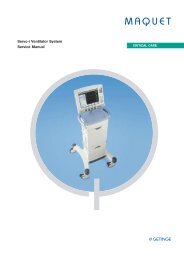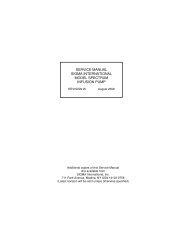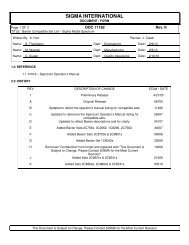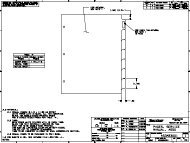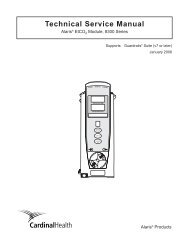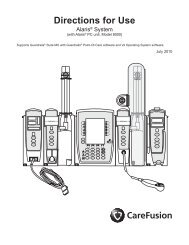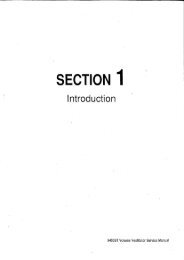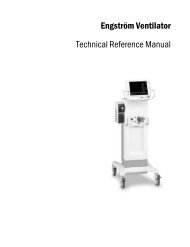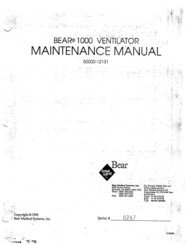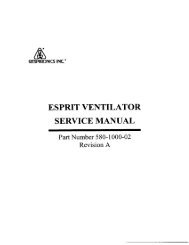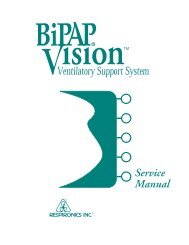Operator's Manual-AVEA - Static Content
Operator's Manual-AVEA - Static Content
Operator's Manual-AVEA - Static Content
Create successful ePaper yourself
Turn your PDF publications into a flip-book with our unique Google optimized e-Paper software.
Service <strong>Manual</strong> 95<br />
Software Protocol<br />
The ventilator’s RS-232 port has two modes of communication. The first mode<br />
continuously outputs real time data every 10 msec and will provide non-real time<br />
data upon request from an external device. This mode requires 19.2 kBaud data<br />
rate. This second mode will only provide non-real time data upon request from an<br />
external device (all other data rates). The mode of communication is selected by the<br />
user upon installation simultaneously with and as a function of the baud rate.<br />
Continuous Output (Default Mode)<br />
The continuous output mode communicates at 19.2 kBaud and sends out the real<br />
time data (flow, pressure, breath phase, breath type, and alarm status) every 10<br />
msec. Upon request, non-real time data will also be sent, however it may delay the<br />
real time data by up to 25 msec. Note, the real time data is queued by the ventilator<br />
so that it is only delayed and not lost.<br />
Data Upon Request<br />
All non-real time data, consisting of control settings, alarm settings and status, and<br />
monitor values will be provided upon request from an external device. This data can<br />
be requested at any transmitted baud rate. The buffer for requested data will be<br />
limited, but will have the capability such that at least three (3) transactions (requests)<br />
can be handled (queued) at a time. Any additional data requests prior to completion<br />
of a corresponding number of message transmissions may be ignored by the<br />
ventilator.<br />
Data Format<br />
The messages are sent and received in variable length data packets. All packets are<br />
preceded by a SYN character, and terminated by a check sum.<br />
The purpose of the SYN character is to enable the receiver to detect the start of a<br />
message, therefore it is an illegal character within a data packet. If the binary value<br />
of SYN (16h) or DLE (10h) appears in the data packet (including the Check Sum,<br />
see below) an escape sequence will be used. The illegal character will be preceded<br />
by the DLE character and 10h will be subtracted from its original value.<br />
The second character in each packet (both transmitted and received) is defined as<br />
the ID character. Valid ID characters are defined in tables 9-3, 9-4 and 9-5.<br />
All other ID's are undefined at this time or are for internal use only. Any request for<br />
data using an undefined ID will be responded to by either the transmission of<br />
undefined data or will be ignored by the ventilator.<br />
The Check Sum [Check] is defined as the one’s complement of the sum of all data<br />
contained in the data packet excluding the “SYN” and “CHECK” characters.<br />
L2342 Revision B November 2004




